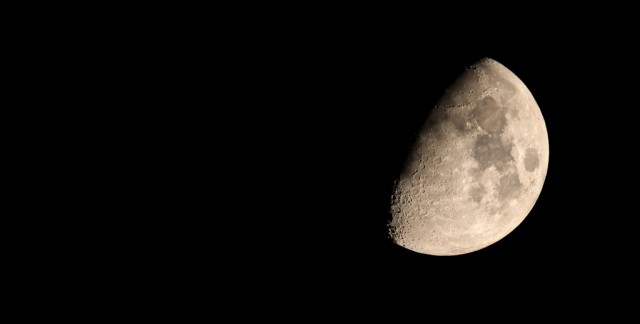Anomalies suggest the far side and pole weren't always where they are today.

© serguei_30
We tend to think of the Moon as a static, dead world, with no atmosphere and no plate tectonics. But there are various signs the Moon has been active - volcanoes and indications of a magnetic field frozen in rocks. Impact craters that flooded with molten rock are also indications of more active periods in the Moon's history. Now, some researchers are suggesting that the residual magnetic fields contain hints that the Moon was once flipped on its side by a violent event.
All evidence indicates that the Moon was formed when a Mars-sized body collided with the early Earth, leaving both in a molten state. This would have left the Moon with a sufficiently molten core that it should have generated a magnetic field for hundreds of millions of years. Remnants of that field should remain trapped in rocks that solidified while it was still in place and remain trapped there to this day.
A team of Japanese researchers has now analyzed magnetic data from two lunar orbiters, the Lunar Prospector and Kaguya. Both orbited the Moon at low altitudes (under 40km) and tracked the local magnetic fields. After eliminating a variety of areas with complex magnetic anomalies, the team looked at data from 57 different sites on the Moon and used the readings to calculate the orientation of the Moon's magnetic field at various points in its past.
Many of the data points clustered at the current pole. But a second set clustered well away from there, somewhere between 45 and 60 degrees from the existing pole. Although the Earth has experienced some degree of polar wander, the pole has always made a gradual track as the Earth's angular momentum shifted. Here, it appears that the Moon made a sudden jump, as there are no indications of gradual track between these two locations.
As the authors note, "A change in the apparent pole position corresponds to a reorientation of the lunar surface with respect to the rotation axis." And
this reorientation appeared to occur relatively suddenly. The authors suggest a number of events could have been the cause, including giant impacts, internal instabilities, and the gravitational disturbances caused by migrations of the Solar System's gas giants.This isn't the first indication that the Moon may have shifted its orientation. An
earlier work examined the distribution of craters on its surface, which should be biased toward a greater number on the far side. Instead, some researchers have suggested the near and far side of the Moon swapped places at some point in the distant past.
Neither of the methods of tracking this shift have been precise enough to indicate when this event took place, which might allow us to associate it with some of the Moon's larger impact basins. But there certainly seems to be enough evidence of this sort of shift to make the idea worth exploring further.
Source: Nature Geoscience, 2014. DOI:
10.1038/NGEO2150

Reader Comments
to our Newsletter